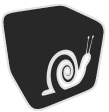Let's start
Include the irrKlang headers and other input/output stuff needed to print and get user input from the console. And as exlained in the first tutorial, we use the namespace irrklang and link to the irrKlang.dll file.
#if defined(WIN32) #include <conio.h> #else #include "../common/conio.h" #endif #include <stdio.h> #include <stdlib.h> #include <irrKlang.h> using namespace irrklang; #pragma comment(lib, "irrKlang.lib") // link with irrKlang.dll
Now let's start with the irrKlang 3D sound engine example 05, demonstrating sound effects. Simply startup the engine using using createIrrKlangDevice() with default options/parameters.
int main(int argc, const char** argv)
{
// start the sound engine with default parameters
ISoundEngine* engine = createIrrKlangDevice();
if (!engine)
return 0; // error starting up the engine
Now we play a .xm file as music here. Note that the last parameter named 'enableSoundEffects' has been set to 'true' here. If this is not done, sound effects cannot be used with this sound. After this, we print some help text and start a loop which reads user keyboard input.
ISound* music = engine->play2D("../../media/MF-W-90.XM",
true, false, true, ESM_AUTO_DETECT, true);
// Print some help text and start the display loop
printf("\nSound effects example. Keys:\n");
printf("\nESCAPE: quit\n");
printf("w: enable/disable waves reverb\n");
printf("d: enable/disable distortion\n");
printf("e: enable/disable echo\n");
printf("a: disable all effects\n");
while(true) // endless loop until user exits
{
int key = getch();
if (key == 27)
break; // user pressed ESCAPE key
else
{
// user maybe pressed an effects key,
// now enable or disable a sound effect.
We get a pointer to the ISoundEffectControl interface, but this only exists if the sound driver supports sound effects and if the sound was started setting the 'enableSoundeffects' flag to 'true' as we did above. This pointer is only valid as long as we don't call music->drop() and delete the music with this.
ISoundEffectControl* fx = 0;
if (music)
fx = music->getSoundEffectControl();
if (!fx)
{
// some sound devices do not support sound effects.
printf("This device or sound does not support sound effects.\n");
continue;
}
Now we disable or enable the sound effects of the music depending on what key the user pressed. Note that every enableXXXSoundEffect() method also accepts a lot of parameters, so it is easily possible to influence the details of the effect. If the sound effect is already active, it is also possible to simply call the enableXXXSoundEffect() method again to just change the effect parameters, although we aren't doing this here.
switch(tolower(key))
{
case 'd':
if (fx->isDistortionSoundEffectEnabled())
fx->disableDistortionSoundEffect();
else
fx->enableDistortionSoundEffect();
break;
case 'e':
if (fx->isEchoSoundEffectEnabled())
fx->disableEchoSoundEffect();
else
fx->enableEchoSoundEffect();
break;
case 'w':
if (fx->isWavesReverbSoundEffectEnabled())
fx->disableWavesReverbSoundEffect();
else
fx->enableWavesReverbSoundEffect();
break;
case 'a':
fx->disableAllEffects();
break;
}
}
}
The program is now nearly finished, just shut down the engine and release the music memory now.
// don't forget to release the resources
if (music)
music->drop(); // release music stream.
engine->drop(); // delete Engine
}
That's it.
Download tutorial source and binary (included in the SDK)
